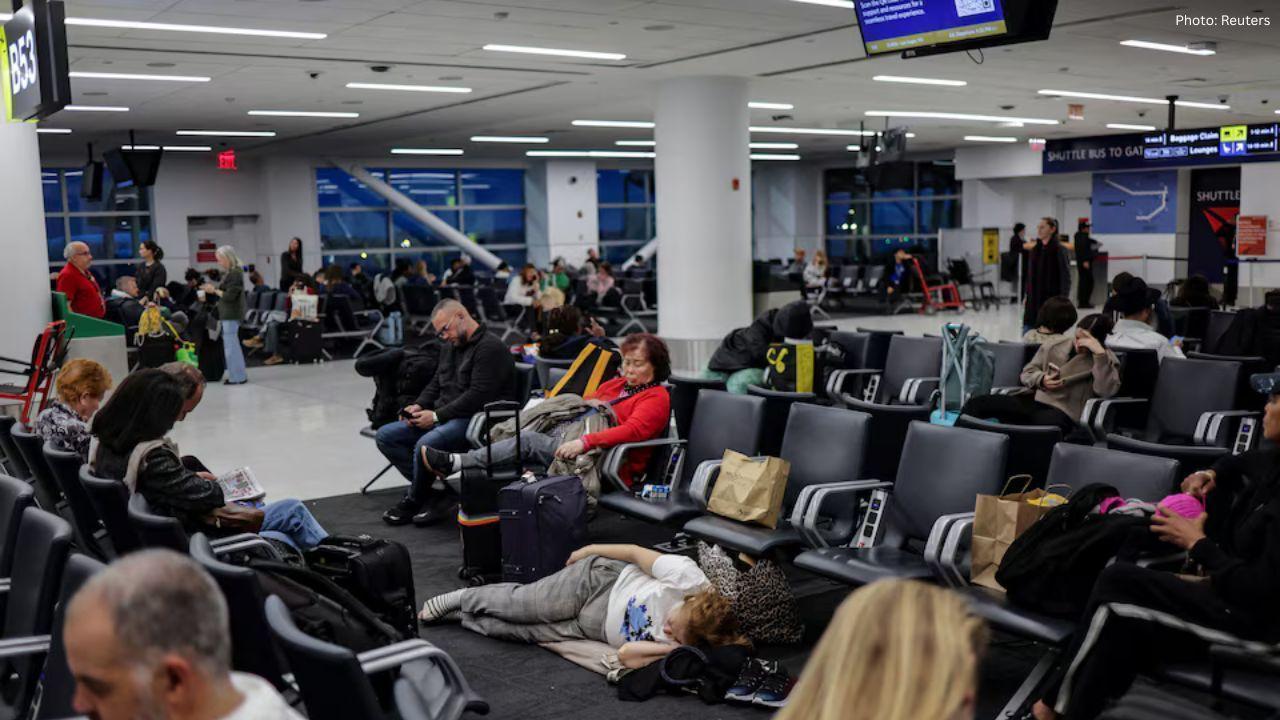You have not yet added any article to your bookmarks!

Join 10k+ people to get notified about new posts, news and tips.
Do not worry we don't spam!

Post by : Anis Farhan
Photo: FreePik
Struggling to fall asleep is more common than you think. Stress, screen time, and racing thoughts can all keep you tossing and turning long after bedtime. Thankfully, recent studies have highlighted several practical, research-backed methods that can help almost anyone drift off quickly. Here are three effective strategies—rooted in science—to try tonight.
If stress and overthinking keep you awake, cognitive shuffling could be your solution. Developed by cognitive scientist Luc Beaudoin and tested at Simon Fraser University, this method involves thinking of random, neutral words to distract your mind from anxious or repetitive thoughts—a strategy designed to lull your brain into sleep mode.
Studies show a significant improvement: students who used cognitive shuffling fell asleep faster than those who tried relaxing techniques like counting sheep.
How to try it:
Pick a random word (e.g., "open").
Mentally list related words starting with each letter—like "orange," "paddle," "nest," "echo."
Visualize each word briefly, without creating a story.
Continue until you drift off.
Dr. Scott Walter calls it a game‑changer, noting it triggers micro‑dreams and calms the brain’s alertness.
Originally developed to treat chronic insomnia, CBT‑I tools are effective for anyone who struggles to fall asleep, not just patients.
At its core, CBT‑I teaches you to resist intrusive thoughts and calm your nervous system with strategies like breathing exercises, journaling, or gratitude practices—helping reduce mental alertness that prevents sleep.
A popular CBT‑I method is the “Constructive Worry Sleep Method”:
Spend 10–15 minutes before bed writing down your top worries and possible solutions.
This pre-sleep ritual prevents stress from consuming your mind on the pillow.
Over a few weeks, users report less nighttime anxiety and faster sleep onset..
Another CBT‑I technique is paradoxical intention, where you try not to fall asleep. Ironically, this reduces the pressure of forcing sleep and speeds up the process.
Even the best techniques won’t work without a sleep-friendly environment. Research from SleepCycle and Smart TV streaming behavior shows good sleep habits make a huge difference.
Essential steps from multiple expert sources include:
Wind-down routine: About an hour before bed, dim lights, avoid screens, and spend 15–30 minutes on relaxing activities like reading or taking a warm shower.
Keep it cool, quiet, dark: A room at 15–19 °C, dark curtains, and white noise or earplugs support melatonin production and sleep cycles .
Breathing relaxers: Techniques like 4‑7‑8 or diaphragmatic breathing calm your nervous system and ease your body into rest .
The Sleep Foundation also recommends progressive muscle relaxation, where you tense and release each muscle group to let physical stress melt away . Visualization—like mentally walking through a calm setting or even a house tour—can distract your mind enough to spark sleepiness.
Here’s how to integrate these methods into your night routine:
Evening preparation (1 hr before bed)
Power down screens
Dim lights
Write down worries and solutions
In bed
Try deep breathing (4‑7‑8 or belly breathing)
Use cognitive shuffling or paradoxical intention
Visualize a calming scene or follow a progressive muscle relaxation sequence
Optimize your sleep space
Keep room cool, dark, quiet
Use white noise or earplugs
Choose relaxation tools (weighted blanket, herbal tea) if helpful.
Most healthy adults fall asleep within 15–20 minutes—but if you can’t sleep within 30 minutes, get out of bed and do something calm and low-light until you feel sleepy again. Return to bed with your next wave of sleepiness.
Cognitive shuffling disrupts overthinking, CBT‑I tackles stress head-on, and a sleep-optimized environment supports your body’s fatigue signals. Together, they address both your mind and your surroundings—two essential elements for quality sleep.
By combining mental distraction, emotional shutdown, and physical comfort, you're giving your body and brain exactly what they need to drift off quickly and deeply.
If falling asleep fast has been a struggle, try one or all of these approaches tonight. Whether you're shaking your thoughts loose with cognitive shuffling, unloading worries with CBT‑I, or practicing deep breathing in a cozy, dark room, you’re giving yourself a real chance to sleep better—without medication.
This article is created by Newsible Asia for informational and editorial purposes. It does not substitute for medical advice. If sleep issues persist, consult a healthcare professional.










Akshaye Khanna exits Drishyam 3; Jaideep Ahlawat steps in fast
Producer confirms Jaideep Ahlawat replaces Akshaye Khanna in Drishyam 3 after actor’s sudden exit ov

Kapil Sharma’s Kis Kisko Pyaar Karoon 2 to Re-release in January 2026
After limited screens affected its run, Kapil Sharma’s comedy film Kis Kisko Pyaar Karoon 2 will ret

Hrithik Roshan and Saba Azad Celebrate Christmas at Family Party
Hrithik Roshan and Saba Azad celebrated Christmas at Sussanne Khan’s party, sharing happy moments wi

China Sanctions 20 US Defense Firms Over Taiwan Arms Sales Dispute
China imposes sanctions on 20 US defense companies and 10 executives for supplying arms to Taiwan, e

Salman Khan’s Grand 60th Birthday Bash at Panvel Farmhouse Shines Bright
Salman Khan celebrates his 60th birthday with a grand party at Panvel farmhouse, sharing joyful mome

Thailand Defence Minister Joins Talks to End Deadly Border Clash
Thailand’s defence chief will join talks with Cambodia as border clashes stretch into a third week,